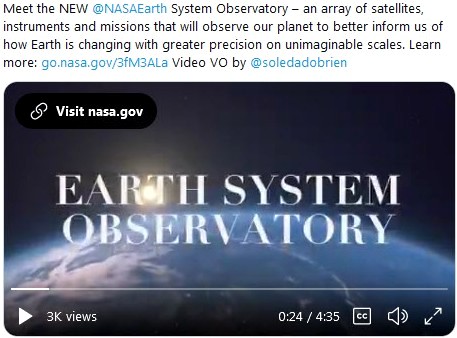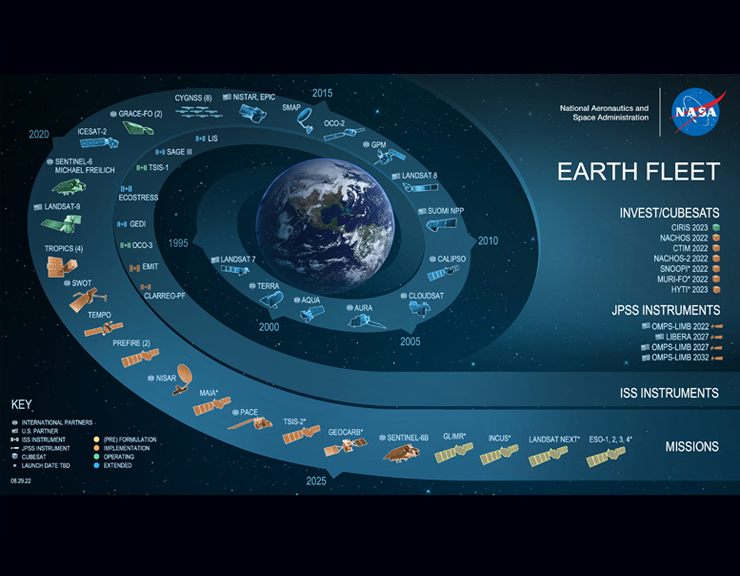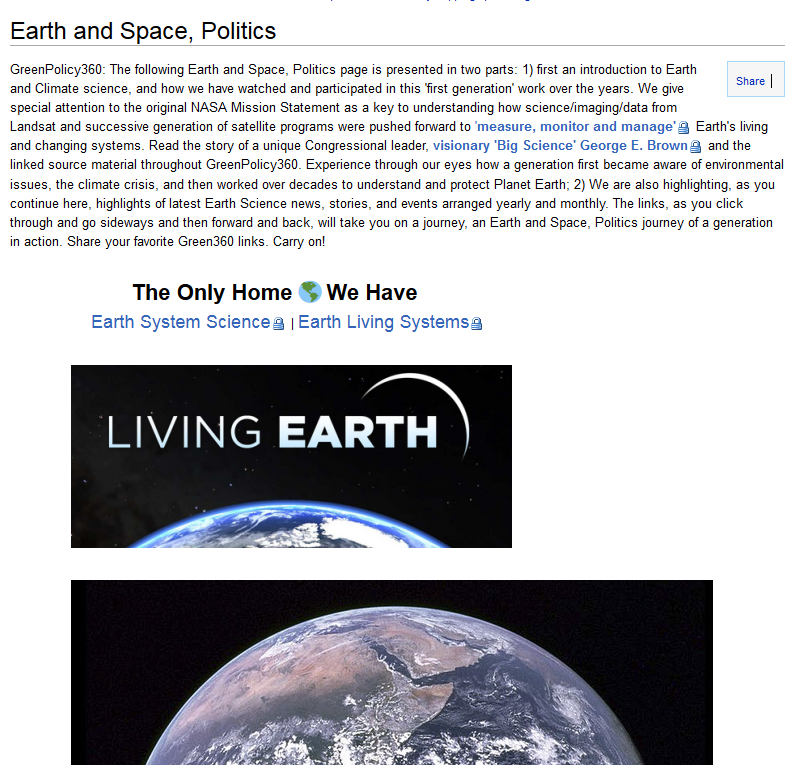File:The Original Mission Statement of NASA.png: Difference between revisions
Siterunner (talk | contribs) No edit summary |
Siterunner (talk | contribs) No edit summary |
||
| Line 23: | Line 23: | ||
In the National Aeronautics and Space Act, which established the agency in 1958, the first objective of the agency was listed as "the expansion of human knowledge of the earth and of phenomena in the atmosphere and space." -- https://www.nasa.gov/offices/ogc/about/space_act1.html | In the National Aeronautics and Space Act, which established the agency in 1958, the first objective of the agency was listed as "the expansion of human knowledge of the earth and of phenomena in the atmosphere and space." -- https://www.nasa.gov/offices/ogc/about/space_act1.html | ||
The Space Act has been amended many times since 1958 but these goals have been little changed. In NASA’s Authorization Act for 1985 the expansion of human knowledge “of the Earth” was added to goal 1 -- https://history.nasa.gov/spaceact-legishistory.pdf -- https://nodis3.gsfc.nasa.gov/OPD/OPD_list.cfm | The Space Act has been amended many times since 1958 but these goals have been little changed. In NASA’s Authorization Act for 1985 the expansion of human knowledge “of the Earth” was added to goal 1 -- https://history.nasa.gov/spaceact-legishistory.pdf -- https://nodis3.gsfc.nasa.gov/OPD/OPD_list.cfm -- https://nodis3.gsfc.nasa.gov/displayDir.cfm?t=NPR&c=1400&s=1 | ||
Revision as of 19:09, 3 June 2023
The Original Mission Statement of NASA
Quote: NASA's Mission, “To understand and protect our home planet..."
In Memory: Congressman George E. Brown and the initial decades of US Earth Science from Space
- A Journey into the present era from the original days of NASA congressional oversight, envisioning and engineering
The National Aeronautics and Space Act was signed into law on July 29, 1958.
In the National Aeronautics and Space Act, which established the agency in 1958, the first objective of the agency was listed as "the expansion of human knowledge of the earth and of phenomena in the atmosphere and space." -- https://www.nasa.gov/offices/ogc/about/space_act1.html
The Space Act has been amended many times since 1958 but these goals have been little changed. In NASA’s Authorization Act for 1985 the expansion of human knowledge “of the Earth” was added to goal 1 -- https://history.nasa.gov/spaceact-legishistory.pdf -- https://nodis3.gsfc.nasa.gov/OPD/OPD_list.cfm -- https://nodis3.gsfc.nasa.gov/displayDir.cfm?t=NPR&c=1400&s=1
~
"We refer to the mission statement in all our research proposals that go out for peer review, whenever we have strategy meetings," said Philip B. Russell, a 25-year NASA veteran who is an atmospheric chemist at the Ames Research Center in Moffett Field, Calif. "As civil servants, we're paid to carry out NASA's mission. When there was that very easy-to-understand statement that our job is to protect the planet, that made it much easier to justify this kind of work."
~
Since 1972, when NASA launched the first Landsat satellite to track changes on the earth's surface, the agency has been increasingly involved in monitoring the environment..
50 plus years of Landsat
The "understand and protect" phrase was cited repeatedly by James E. Hansen, a climate scientist at NASA...
🌎
GreenPolicy360 continues its campaign to restore the original Earth Sciences mission language into today's operating NASA Mission Statement.
Background:
For a number of years now, since Planet Earth science goals were removed 'quietly' from the Mission Statement in 2005 during the George W. Bush administration, a legacy of Earth Observation programs have continued since the 1960s. Concurrently, your GreenPolicy360 founder has followed the initial proposals of Earth Science led by Representative George E. Brown on the House science, technology and space committee. NASA's Earth observation programs, and the technology developed, are now in full bloom with an Earth System Observatory and Earth Observing System (EOS).
Reference
Over four decades of Earth science, technology and a first generation of Earth imaging, data and study had put in place a foundation for all future generations, humanity, planet citizens, to continue the mission.
Protecting and preserving our home planet is also a continuing GreenPolicy360 mission, a "Living Earth" call to action of Green values and politics that launched, it can be said in the 1960s. Our collaborative work, we called it "teach-ins" back in the day, was highlighted in the public imagination in December 1968, the famed "Earthrise" image of Earth, that was featured on the cover of Look Magazine in January 1968.
Ours is a Whole Earth vision, an Earth Systems approach to understanding the science that enable seeing, whether via LIDAR or our own eyes, whether via snapshots time-stamped and shared, or vast databases of dynamic, changing Earth/Atmospheric/Ocean science that enable us, community-by-community, nation-by-nation, to navigate into the future.
The campaign to revisit, remember and restore, with renewed emphasis, the original NASA Earth Science Mission is here and now, as multiple challenges, often described as 'existential', are threatening life on Earth.
Our efforts to bring back Earth Science language into the NASA Mission Statement didn't make it into this week's NASA Earth Sciences Advisory Committee meeting, our hope is that in the not too distant future, the annual/quarterly NASA advisory meetings will take up the ongoing Planet Earth Mission as the Earth Sciences Mission, now a constellation of programs, carries on ...
🌎
Hello former FL Senator-current NASA Administrator Bill Nelson, Dr. Sara Tucker
Earth Science Advisory Committee (ESAC), Science Mission Directorate, NASA Advisory Council (NAC)
The reality of Earth Science should once again be a highlight and focus of NASA's Mission Statement.
Please see the attached re: the Original NASA Mission Statement. Please consider our call to renew and update the Earth Sciences language.
Thank you and Onward!
GreenPolicy360
NASA ADVISORY COUNCIL
- Science Committee | May 31-June 1, 2023
○
File history
Click on a date/time to view the file as it appeared at that time.
| Date/Time | Thumbnail | Dimensions | User | Comment | |
|---|---|---|---|---|---|
| current | 19:25, 1 June 2023 | 787 × 166 (14 KB) | Siterunner (talk | contribs) |
You cannot overwrite this file.
File usage
The following 2 pages use this file:
- Anthropocene
- Atmospheric Science
- Biodiversity
- Citizen Science
- Climate Change
- Climate Policy
- Democracy
- Democratization of Space
- Earth360
- Earth Imaging
- Earth Observations
- Earth Science
- Eco-ethics
- Eco-nomics
- Environmental Full-cost Accounting
- Environmental Laws
- Environmental Protection
- Environmental Security
- Environmental Security, National Security
- ESA
- Externalities
- Global Security
- Global Warming
- Green Graphics
- NASA
- NOAA
- Natural Resources
- New Definitions of National Security
- New Space
- Oceans
- Ocean Science
- Orbital Perspective
- Planet Citizen
- Planet Citizens
- Planet Scientist
- Planet Citizens, Planet Scientists
- Planetary Science
- Resilience
- Sea-Level Rise & Mitigation
- Renewable Energy
- Solar Energy
- Space Science and Space Physics
- Strategic Demands
- Sustainability
- Sustainability Policies
- ThinBlueLayer
- Threat Multiplier
- United Nations
- US Environmental Protection Agency
- Whole Earth
- Wind Energy
- Youth



